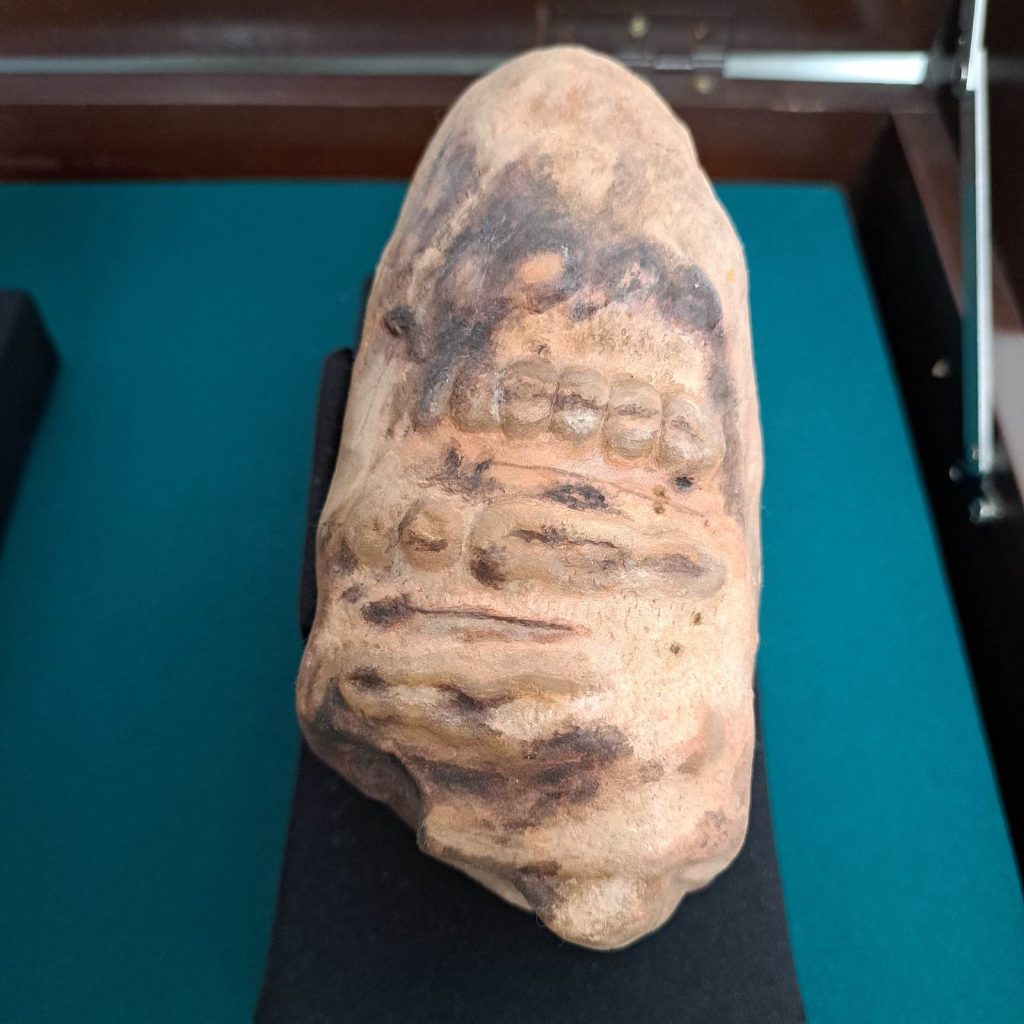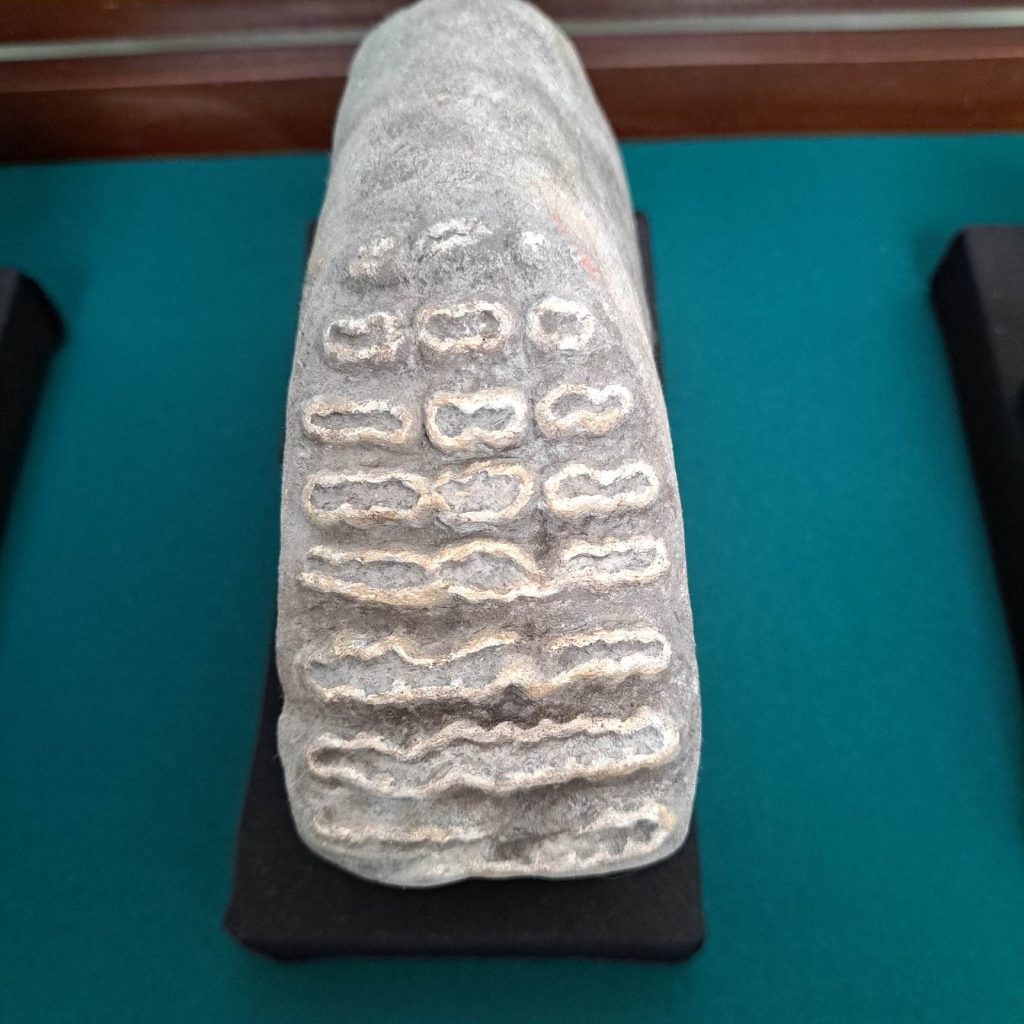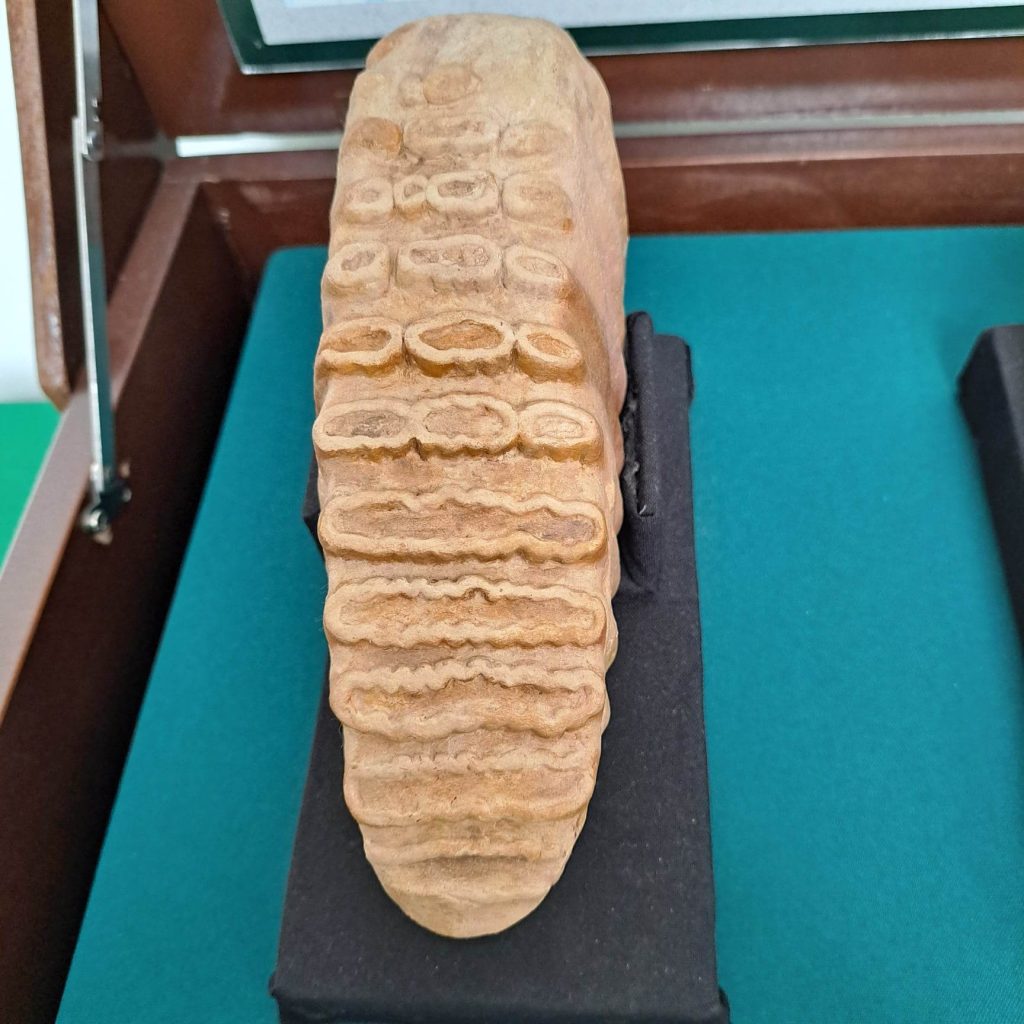Disclaimer: This is not the official press release or communications. The text are taken from the exhibit itself. All credit goes to the National Museum of the Philippines – Western Visayas Regional Museum, International Centre for the Study of the Preservation and for Restoration of Cultural Property (ICCROM), CollAsia Field Projects (Connecting Communities and Collections), and the Cultural Heritage Administration of the Republic of Korea.
Tooth fossils of Asian elephants (Elephas sp. ) and the now-extinct stegodonts (Stegodon sp.) were found in the hills of Sitio Bitoguan, Barangay Jelicuon, Cabatuan, Iloilo in 1965 and 1967, respectively. The artifacts were dated to 750,000 years old (Middle Pleistocene).

Juvenile Stegodont tooth
Stegodon sp.
steg-o-don
Mga 750,000 anyos / milion years old
Cabatuan Formation
Jelicuon, Cabatuan, lloilo
The elephants and stegodonts looked similar except that stegodonts have longer (up to 10 feet long) and straighter tusks that grew close together. An elephant has four high-crowned, multi-plated molars, allowing it to graze on grasses and leaves in dense forests. The lower molars curve inwards (concave) while the upper molars on curve outwards. Stegodont has low-crowned, roofed teeth that is well adapted to browsing on twigs and leaves 1O on trees in both the savannas and wooden areas.

Elephant upper molar
Elephas sp.
el-e-fas
Mga 750,000 anyos / million years old
Cabatuan Formation
Sitio Bitoguan, Brgy. Jelicuon, Montinola
Jelicuon, Cabatuan, lloilo
The Elephas sp. was survived by the endangered Asian elephant (Elephas maximus). The stegodont went extinct from 11.6 million years ago to the late Pleistocene. Their feeding habits (browsers) could have affected their survival when environmental conditions changed. Elephas sp. has molars with compressed diamond-shaped structures called lamellae that are adaptable to grinding grasses.

Elephant lower molar
Elephas sp.
el-e-fas
Mga 750,000 anyos / milion years old
Cabatuan Formation
Sitio Bitoguan, Brgy. Jelicuon, Montinola
Jelicuon, Cabatuan, lloilo
The same fossils were found in Pangasinan, Rizal, Cagayan Valley, and Davao. Animals walked on land bridges when the sea levels dropped an average of 120 meters lower than it is today about 790,000 years ago. Panay, Guimaras, Negros, Cebu, and Masbate were once connected as the Greater Negros-Panay Pleistocene Aggregate Island Complex, thus, the distribution and endemicity of animals among these islands are similar But the Greater Luzon, Visayas, and Mindanao PAIC were not connected by land bridges. How come elephants and stegodonts were found on these islands? These large mammals are believed to be very good swimmers.
Pambansang Museo sa Barangay: Bringing Museum Collections to the Fringes
Parts of the Pambansang Museo sa Barangay:
Haból Panay: The Woven Artistry of Western Visayas
Amlig: Biodiversity Conservation in West Visayas Faunal Region
Other helpful exhibits:
Rocks of the Visayan Islands
Shells of the Visayan Region
Rafflesias of the Visayan Islands
Protected Areas of the Visayan Region
The Forest Products
The Forest Stratification
The Kanlaon Volcano
The Chocolate Hills
The Pawikan
**Content was only based on the photos I took during my personal visit. I may have missed significant details.
